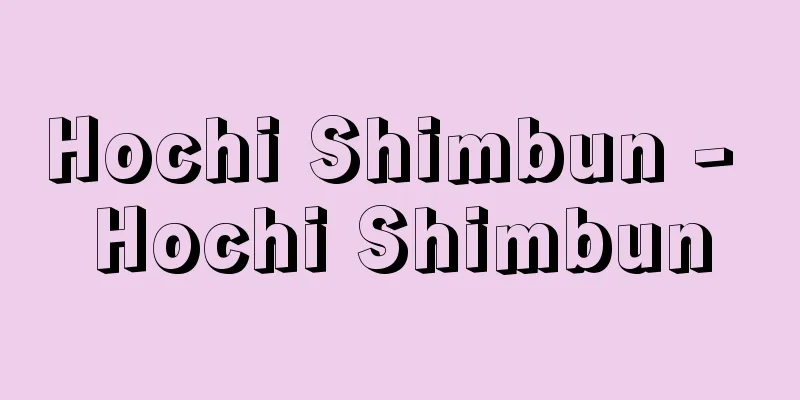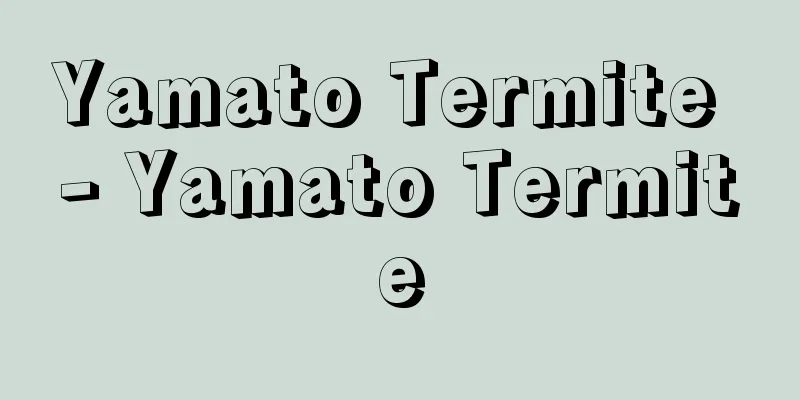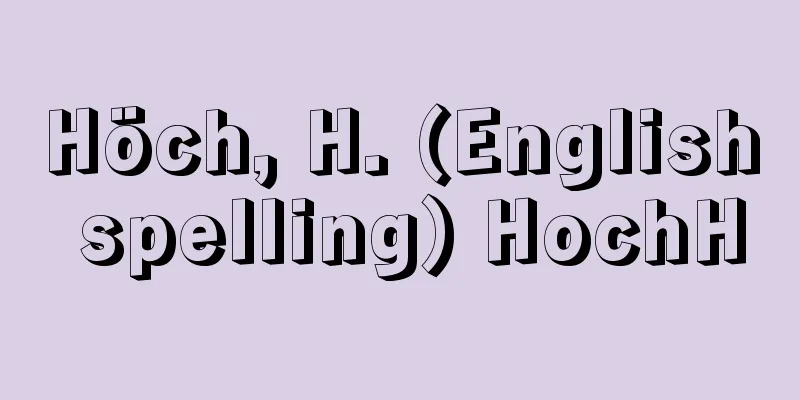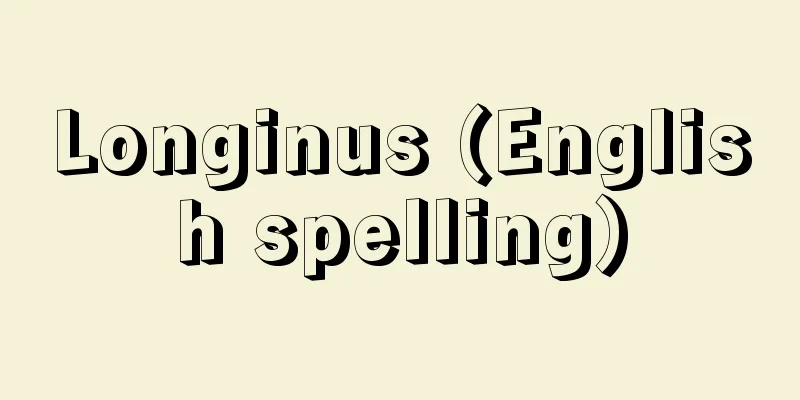Hochi Shimbun - Hochi Shimbun

|
Before the Second World War, it was a representative general daily newspaper in Tokyo. After the war, it became a morning paper specializing in sports, entertainment, and culture. Its predecessor was the five-monthly Yubin Hochi Shimbun, which was launched on July 15, 1872 (June 10, 1875, lunar calendar) by secretary Konishi Gikei at the request of postmaster general Maejima Hisoka. It became a daily newspaper in June of the following year, 1873. In 1874, former shogunate official Kurimoto Joun joined the newspaper as chief editor, and since then, it led the world of opinion as a political newspaper for civil rights. When Okuma Shigenobu formed the Constitutional Reform Party in 1882, it became the party's organ for a time, but in November 1886, president Yano Fumio reformed the paper, lowered the price, and began its path to becoming a commercial newspaper. On December 26, 1894, it changed its title to Hochi Shimbun, and increased its circulation by promoting itself as a family newspaper. In 1898, it was the first to add a classified advertising section, and from 1902 (Meiji 35), it began publishing a three-color paper every Monday. On October 27, 1906, it was the first to successfully publish morning and evening editions, leading the newspaper industry and becoming one of the leading newspapers in Tokyo throughout the Meiji and Taisho periods. However, in the Showa era, it was overshadowed by the Osaka-based Asahi Shimbun and Mainichi Shimbun, and on August 5, 1942 (Showa 17), it was merged with the Yomiuri Shimbun in a wartime newspaper merger, becoming the Yomiuri Hochi. After the war, on December 15, 1946 (Showa 21), it was republished as an evening paper, but in January 1950, it changed from a general paper to a sports paper, becoming a general leisure paper with a morning edition. It was printed in Osaka from March 1964, in Hokkaido from July 1973, Nagoya in 1979 (Chubu Yomiuri Shimbun changed it to Hochi Sports), and in March 1998 (Heisei 10) it was published in Kyushu, completing the national newspaper system, and in 1990 the title was changed to Sports Hochi. The number of copies sold is 530,000 (2010) from the Tokyo headquarters, and it boasts a high home delivery rate. [Akihiko Sunohara] "The Hochi Shimbun Company, edited and published 'The Seventy Years of Hochi' (1941)" " The Hochi Shimbun Company, edited and published 'Beyond the Century - The 120-Year History of the Hochi Shimbun' (1993)" [References] | |Published in 1875 (Meiji 8). An article reporting that two criminals managed to break out of jail under cover of rain and wind, only to be arrested by prison officials who had long been suspicious of them . "Yubin Hochi Shimbun" No. 525 Published in 1875 (Meiji 8). The story tells of an old man who accidentally bumped into a geisha's horse, causing her to fall over, but was saved by a policeman, after which the two geisha were taken to a police station. Yoshitaka Tsukioka's New Year's painting, National Diet Library Collection "> "Yubin Hochi Shimbun" No. 576 The company building was located in Sanjikkenbori, Kyobashi Ward (currently Ginza, Chuo Ward, Tokyo). "Famous Places in Japan" (1900, Meiji 33) National Diet Library Hochi Shimbun (Meiji period) Source: Shogakukan Encyclopedia Nipponica About Encyclopedia Nipponica Information | Legend |
|
第二次世界大戦前は、東京の代表的一般日刊紙。戦後、スポーツ・芸能・文化専門の朝刊紙となる。1872年7月15日(明治5年6月10日=旧暦)、駅逓頭(えきていのかみ)前島密(ひそか)の意を受けて秘書の小西義敬(ぎけい)が創刊した月5回刊の『郵便報知新聞』がその前身。翌1873年6月から日刊となる。1874年旧幕臣栗本鋤雲(くりもとじょうん)が主筆として入社、以来、民権派の政論新聞として言論界をリードした。1882年大隈重信(おおくましげのぶ)が立憲改進党を結成すると、一時その機関紙となるが、1886年11月、矢野文雄社長が紙面を改革、定価を下げて営業新聞への道を歩み始めた。1894年12月26日『報知新聞』と改題、家庭新聞をうたって部数を伸ばした。1898年には初めて案内広告欄を設け、1902年(明治35)から毎週月曜日に三色刷り紙面を発行、1906年10月27日からは朝夕刊発行に初めて成功するなど新聞界をリード、明治・大正期を通じて東京屈指の有力紙となった。しかし昭和に入ると大阪系の『朝日新聞』『毎日新聞』に押され、1942年(昭和17)8月5日、戦時新聞統合で『読売新聞』に合併、『読売報知』となる。戦後1946年(昭和21)12月15日、夕刊紙として復刊したが、1950年1月、一般紙からスポーツ紙に転換、朝刊の総合レジャー紙となる。1964年3月から大阪、1973年7月から北海道で現地印刷、1979年には名古屋(中部読売新聞から『報知スポーツ』)、1998年(平成10)3月からは九州発刊で全国紙体制が完成、題号も平成に入って1990年『スポーツ報知』と変更した。販売部数は東京本社53万部(2010)で、宅配率の高さを誇っている。 [春原昭彦] 『報知新聞社編・刊『報知七十年』(1941)』▽『報知新聞社編・刊『世紀を超えて――報知新聞120年史』(1993)』 [参照項目] | |1875年(明治8)発行。2人の罪人が風雨に紛れて牢破りを決行したが、かねてより不審を抱いていた監獄の役人に捕縛されたことを報じた記事。月岡芳年画・2代松林伯円記国立国会図書館所蔵"> 『郵便報知新聞』 第五百二十五号 1875年(明治8)発行。老人が、出会い頭に芸者の乗る馬に触れて転倒させられたところを巡査によって救われ、その後2人の芸者は屯所(駐在所)に連れていかれたと報じている。月岡芳年画国立国会図書館所蔵"> 『郵便報知新聞』 第五百七十六号 京橋区三十間堀(現在の東京都中央区銀座)にあった社屋。『日本之名勝』(1900年〈明治33〉)国立国会図書館所蔵"> 報知新聞社(明治時代) 出典 小学館 日本大百科全書(ニッポニカ)日本大百科全書(ニッポニカ)について 情報 | 凡例 |
<<: Insect repellent treatment
Recommend
Eiseiroku - Eiseiroku
During the Meiji Restoration, an unlimited stipend...
Plantago virginica (English spelling) Plantagovirginica
…[Yoshiharu Iijima]. … *Some of the terminology t...
bâton percé (English spelling)
…An ancient stone tool made of bone and antler. I...
English holly
An evergreen shrub of the Ilex family, with stiff ...
Word Problems - Bunshodai
Applied arithmetic and mathematics problems presen...
Master system - Oyakatasei
…a system typical of vocational training in medie...
Bolo
〘 noun 〙 (bolo) A small round confectionery made b...
Erdely (English spelling)
...This was the name used by the Magyars (Hungari...
Kamassi
...Ganasan is spoken in the Taymyr Peninsula, or ...
quasiparticle
…The excited state of a macroscopic object consis...
Kindī (English spelling) Kindi
...Accordingly, there was a growing movement to e...
Chichibu Basin
A roughly rectangular tectonic basin in the center...
Aluminothermy method - Aluminothermy method
⇒Thermite process Source: About Shogakukan Digital...
Costus igneus (English spelling)
…[Ichiro Sakanashi]. … *Some of the terminology t...
Hitler - Adolf Hitler
German politician, Führer and Chancellor of the T...









